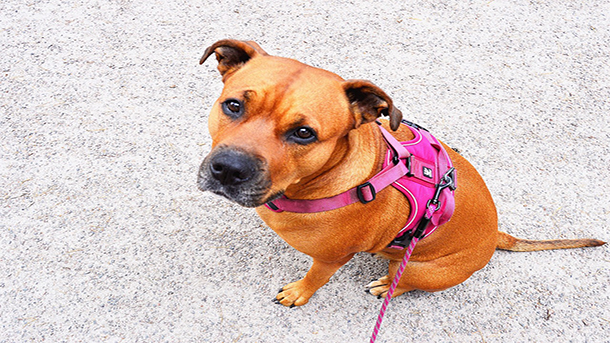A recent study commissioned by the Dogs Trust found that 44% of owners do not properly restrain their dogs whilst driving. This startling finding suggests that there is a lack of understanding about the importance of ensuring pets are safe and secure in a moving vehicle. In this blog we outline the legal implications and provide practical advice on how to properly restrain your pet in the car.
Why should I restrain my pet whilst driving?
Your pet’s safety is your responsibility, so it’s important to take the necessary precautions when travelling by car. This is because unrestrained pets can be a distraction for drivers, which may result in a lapse in concentration or cause a collision.
If a sudden movement was to occur, your pet may be thrown forwards, injuring themselves or other passengers. In the event of a car accident, an un restrained pet could escape and cause further injury to themselves or become lost.
How should I restrain my pet?
There are a number of ways you can restrain your pet when travelling by car. Your chosen method is likely to depend on your pets size and temperament. What works for one dog may not work for another, so there may be some trial and error needed to find the right solution.
Crates and carriers
Crates and carriers are an excellent way of transporting your pet as it keeps them in a confined space and prevents them being able to roam around. Crates should be large enough to allow your pet room to sit up and turn around and should contain comfy bedding or towels. You should also ensure that the crate is properly secured.
Harness
A padded harness is one of the best ways to keep your pet safe when driving. Ensure the harness fits correctly around the dog’s neck and chest and has fittings that will connect to the cars existing seatbelt. It is recommended that pets to not travel in the front passenger seat as airbags can be incredibly dangerous if they are deployed. We also suggest that your pet does not sit directly behind the driver.
Car and boot guards
Boot guards create a physical barrier between your pet and other passengers. Whilst this is great at preventing distractions, it does not physically restrain your pet in case of an accident.
Whilst transportation devices are readily available in most pet shops and internet stores, not all equipment is crash tested. Although more expensive than high street competitors, you should try wherever possible to purchase products which have been approved by the Centre for Pet Safety (CPS). The CPS insist companies bearing their logo participate in rigorous testing and meet independent safety standards.

What does the law say?
According to the Highway Code, it is the driver’s responsibility to “make sure dogs or other animals are suitably restrained so they cannot distract you while you are driving or injure you, or themselves, if you stop quickly”. Whilst breaking the highway code does not incur a legal sanction, you could receive a fine or fixed penalty points on your licence if the police deem you to be driving without due care or attention.
Many drivers don’t realise that driving without restraining a pet could void their car insurance if an accident was to occur. Some pet insurance companies will not pay out or cover the cost of treatment if a pet was injured in a crash and not properly restrained.
What should I do if my pet doesn’t like travelling in the car?
We often hear that pets don’t travel well or get car sick on long journeys. There are a number of things you can do to build their confidence and help them overcome fears associated with spending time in the car.
Start young
We recommend that introducing your pet to car travel from an early age is the best way to encourage good car behaviour. Short but frequent journeys will help get them used to spending time in the car and spending time in the crate or harness. The duration of trips can be increased with time. To begin with it may be beneficial to have a blanket that smells of you next to them to help them feel secure.
Stop often
On long journeys make sure you stop often to give your pet chance to go to the toilet and stretch their legs. When exiting the vehicle ensure your pet is calm and on a lead so that they do not risk being injured by passing traffic.
Avoid food
If your pet experiences car sickness you should avoid feeding them in the hours leading up to the journey.
Keep cool
Try and keep your car temperature cool whilst travelling and never leave your pet alone in the vehicle. Ensure they have regular access to fresh drinking water to keep hydrated throughout the journey. If you have the window open for your pet whilst driving make sure they cannot stick their head out of the car as they could get hurt or escape.